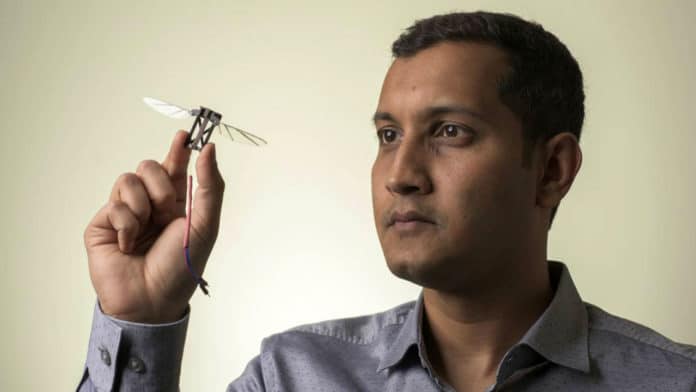Robotic researchers often use certain animals or birds with some intelligent abilities as a source of inspiration. Scientists studying small next-generation drones are particularly interested in flying insects such as bees.
A team, led by researchers from the University of New South Wales (UNSW) Canberra, has discovered the secret of bumblebees’ self-aware dexterous flight that could have applications for the next generation of drones and autonomous vehicles.
Researchers studied how bumblebees navigated through a tunnel with a series of gates featuring different-sized holes. They found that the bees were able to successfully fly through the apertures, thanks to a remarkable sense of their own size and detailed perception of the obstacles’ openings.
“Previous research had indicated that complex processes, such as the perception of self-size, were cognitively driven and present only in animals with large brains. However, our research indicates that small insects, with an even smaller brain, can comprehend their body size and use that information while flying in a complex environment,” said Dr. Sridhar Ravi, the lead author of the study.
The team says this is the first time such evidence has been seen in flying invertebrates. They found that these insects were able to skilfully fit through the gates by manipulating the speed of their approach and posture, even flying sideways when the hole was smaller than their wingspan.
Using ‘lateral peering,’ a process where the bee scans a feature, using depth perception and spatial awareness, the insects build a comprehensive map of the aperture and can change their body orientation to fit through the gap.
“Insects are fantastic models for robots because they have exceedingly small brains, and yet they’re able to perform overly complex tasks. Over thousands of years, nature has coded insects with some amazing attributes. Our challenge now is to see how we can take this and apply a similar coding to future robotic systems, enhancing their performance in the natural world,” Dr. Ravi said.
